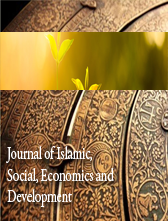UTILIZATION OF BANANA PEEL WASTE IMPREGNATED INTO PVA/ALGINATE POLYMERIC BEADS FOR COPPER(II) ION ADSORPTION
Abstract
Globally, environmental pollution is a major topic because it affects the balance of the ecosystem. Banana peel waste is one of the major organic pollutants found in Indonesia. To minimize the waste, banana peel waste is used as an adsorbent for inorganic pollutants removal such as copper(II) ions. However, considering the small size of the banana peel waste, it was impregnated into PVA/Alginate polymeric beads to increase the particle size. Thus, it can be easily separated from the aqueous solution after extraction. The SEM image shows the morphology of PVA/Alginate polymeric beads impregnated with and/or without banana peel waste with different morphology in cavity and pore. The amount of banana peel waste impregnated into polymeric beads affected the mechanical strength and density of the polymeric beads. The optimum working pH for copper(II) ion adsorption using polymeric beads was 4 with the extracted amount of copper(II) is 1.383 mmol/g. The higher the initial concentration of copper(II) ion present in the solution, the higher amount of copper(II) ion extracted into the polymeric beads and reached the equilibrium condition at a higher initial concentration of copper(II) ion. It can be concluded that the impregnation of banana peel waste into the PVA/Alginate polymeric beads affected the morphology of polymeric beads by forming a hollow pore inside the polymeric beads, polymeric beads well-worked at the acidic condition and the equilibrium condition of copper(II) ion adsorption achieved at a higher initial concentration of copper(II) ion in the solution.













